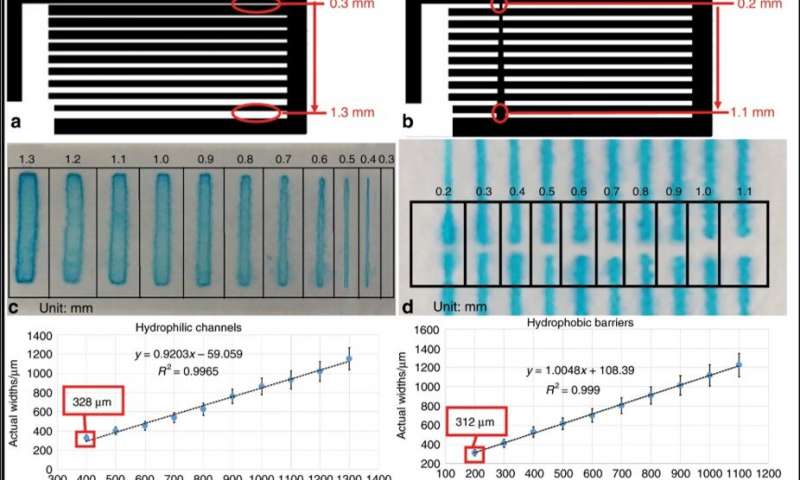Microfluidic paper-based analytical devices (µPADs)
are a promising concept with rapid development in recent years. In
a new study published on Nature: Microsystems &
Nanoengineering, a team led by Yanfang Guan and Baichuan Sun in
electromechanical engineering in China, developed a new technique
to engineer µPADs known as atom stamp printing (ASP). The method
was cost-effective, easy to operate and allowed high production
efficiency with high resolution. As a proof of concept, they used
µPADs engineered via the ASP method to detect varied concentrations
of copper (Cu2+) via a colorimetric method. The devices achieved a
Cu2+ detection limit of 1 mg/L. Guan et al. also created a new
paper-based solid-liquid extraction device (PSED) using a
three-dimensional (3-D) µPAD with a “3+2” structure and recyclable
extraction mode. Due to the characteristics of paper filtration and
capillary force, the device could efficiently complete multiple
extraction and filtration steps from solid-liquid extraction
processes. The PSED platform allowed simple, cost-effective and
fast heavy metal ion detection at point-of-care. The work has great
promise for applications in food safety and environmental pollution
in resource-limited areas.
Heavy metal ion detection and extraction using paper-based
atom stamp printed devices




